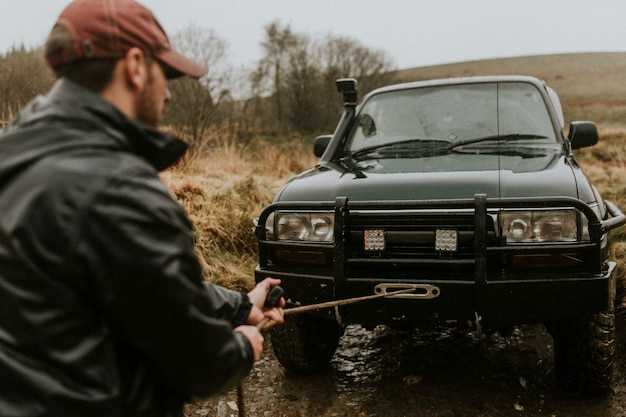
Purchasing a used off-road Jeep can be an exciting venture for adventure enthusiasts. However, the thrill of owning a rugged vehicle comes with the responsibility of ensuring that the Jeep is in good condition and worth the investment. Before making a decision, it’s essential to conduct thorough checks to avoid potential pitfalls.
One of the most critical aspects to check is the vehicle’s maintenance history. This information can reveal how well the previous owner cared for the Jeep and whether it has undergone any necessary repairs. A well-maintained Jeep is likely to perform better and have a longer lifespan, making it a wiser choice for off-roading adventures.
Additionally, examining the Jeep’s body and undercarriage is crucial. Look for signs of rust, dents, or any modifications that might indicate abuse during off-road excursions. These physical checks are vital in assessing the overall integrity and safety of the vehicle, ensuring that your investment will stand up to the challenges of off-road driving.
Assessing the Jeep’s Off-Roading History and Modifications
When considering the purchase of a used off-road Jeep, it is essential to thoroughly check its off-roading history. Start by asking the seller about the vehicle’s previous uses. This includes any off-road trails it may have navigated, the types of terrain it tackled, and the frequency of off-road excursions. A Jeep that has been regularly used in rough conditions may have undergone more wear and tear than one that has primarily been driven on paved roads.
Next, inquire about any modifications made to enhance its off-road capabilities. Popular upgrades typically include suspension lifts, larger tires, and enhanced drivetrain components. While these modifications can improve performance, they can also introduce potential issues if not installed correctly. Always check for the quality of these modifications and whether they were done by a reputable professional or experienced enthusiast.
Additionally, it’s important to evaluate whether the Jeep has undergone any repairs due to off-roading incidents. Look for signs of damage under the vehicle such as frame dents or differential leaks. A comprehensive vehicle history report may also provide valuable insights into any accidents or significant repairs linked to off-road activities.
Finally, consider joining off-road forums or local Jeep clubs to gather community feedback on specific models or builds. Owner testimonials can reveal more about the Jeep’s performance and any known issues that might not be apparent during an initial inspection. Combining these checks will give you a clearer picture of the Jeep’s off-roading history and modifications, helping you make an informed decision.
Inspecting Mechanical Condition and Potential Issues

When considering a used Jeep, thorough inspection of its mechanical condition is crucial to avoid unexpected repairs and ensure reliability on off-road adventures. Begin by checking the engine for any signs of leaks, irregular noises, or excessive vibrations. A well-maintained engine should start easily and run smoothly without any warning lights on the dashboard.
Next, assess the transmission’s performance. Shift through all gears to see how well the used Jeep responds. Any hesitation, slipping, or grinding noises could indicate issues that may require immediate attention. Additionally, examine the fluid levels and quality of the transmission fluid; dark or burnt-smelling fluid can be a warning sign.
Braking systems are vital for safety, so ensure the brakes are responsive. Inspect the brake pads and rotors for wear and listen for any unusual sounds when applying the brakes. Effective checks of the braking system can prevent potential accidents on challenging terrains.
Furthermore, inspect the suspension and steering components. Look for any signs of wear or damage, including cracked or worn bushings and leaking shock absorbers. Take the time to move the Jeep in various directions to check for play in the steering wheel, which could indicate problems with steering joints or components.
Don’t forget to check the drivetrain, including the transfer case and differentials. Inspect the fluids here as well, as low or dirty fluids can lead to significant issues. Engage four-wheel drive to ensure it operates correctly without any grinding or unusual noises.
Lastly, review the condition of the tires. Check for uneven wear patterns which can suggest alignment issues or problems with suspension parts. Proper tire condition is essential for off-road performance and safety.
By conducting a thorough check of these mechanical elements, you can better assess the potential issues of the used Jeep, ensuring a safer and more enjoyable off-road experience.
Evaluating Documentation and Ownership Records

When considering the purchase of a used off-road Jeep, it is crucial to thoroughly evaluate documentation and ownership records. Start by reviewing the vehicle’s title to ensure it is clear and free of liens. A clean title indicates that the seller has the legal right to sell the vehicle without any financial obligations attached.
Next, ask for the vehicle history report. This report provides essential information about past ownership, accident history, and any reported damage. It is important to check for discrepancies that may indicate the vehicle has been in serious off-road accidents or has undergone extensive repairs, which could affect its performance and reliability.
Additionally, review the maintenance records. A well-maintained off-road Jeep is likely to perform better and last longer. Look for documentation of regular servicing, such as oil changes, tire rotations, and any upgrades or modifications made to enhance off-road capabilities. Verify that the maintenance was performed at reputable service centers.
Finally, inquire about the number of previous owners. Fewer owners can sometimes indicate that the vehicle has been cared for better. However, ensure that each ownership change was documented properly. Consider checking if the Jeep has been used primarily for off-road activities, as excessive off-roading may lead to added wear and tear.




